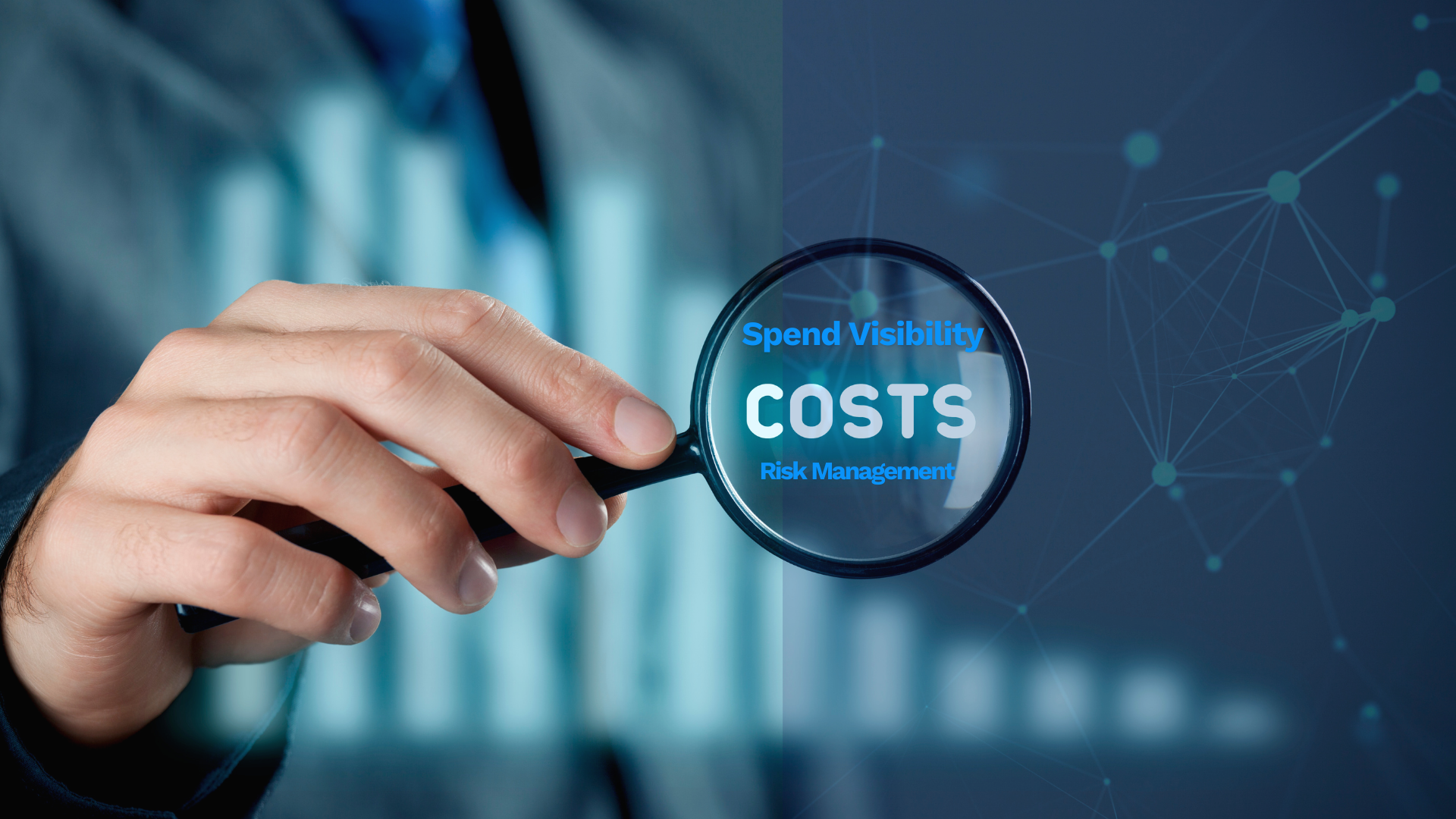Why continuous monitoring is crucial for supplier risk management
Companies are increasingly interconnected in today's global economy and supplier relationships are integral to business success. However, the...
4 min read
RobobAI : Jul 18, 2024

Modern global supply chains are increasingly complex, and organizations can easily be overwhelmed by the responsibility of protecting them. It is critical that supplier risk management is understood and implemented, and the need for robust risk management strategies has never been greater. By adopting continuous improvement processes, fostering transparent supplier communication, centralizing risk management, and leveraging advanced technologies, leaders can enhance their organization's overall risk management strategy, ensure long-term resilience, and minimize supply chain disruptions.
Continuous improvement is a vital process in supplier risk management. It involves regularly reviewing and updating risk management practices to adapt to evolving risks and changing supplier landscapes. Here are some key aspects of continuous improvement in supplier risk management:
The supplier landscape is constantly evolving due to factors such as market fluctuations, geopolitical events, and technological advancements. Continuous improvement processes help businesses stay ahead of these changes by regularly assessing and updating their risk management strategies. This proactive approach ensures that suppliers remain effective, relevant and compliant.
One of the most effective strategies for continuous improvement is scenario-based contingency planning. This involves creating and testing various risk scenarios to identify potential vulnerabilities and develop response plans. By preparing for different risk scenarios, businesses can respond more effectively to unexpected disruptions and minimize their impact on the supply chain.
Continuous improvement also involves implementing proactive risk mitigation strategies. This includes regularly reviewing supplier performance, conducting risk assessments, and updating risk management protocols based on new insights. Supplier risk visibility is paramount to enabling proactive risk mitigation. It helps businesses address potential issues before they escalate, ensuring a more resilient supply chain.
Effective supplier risk management requires collaboration and transparency with suppliers. Establishing robust communication channels and fostering mutual understanding are essential for mitigating shared risks. Here are some best practices for transparent supplier communication:
Defining clear communication protocols is crucial for ensuring all parties understand their roles and responsibilities in risk management. This includes establishing guidelines for reporting and addressing risks and defining the frequency and format of communication.
Regular meetings, updates and questionnaires with suppliers help maintain open lines of communication and ensure that both parties are aligned on risk management efforts. These provide an opportunity to discuss potential risks, share updates, and develop joint strategies to mitigate risk.
Encouraging two-way feedback and providing a central communication channel fosters a collaborative environment where suppliers feel comfortable sharing their concerns and insights. This open dialogue can lead to more effective risk management strategies and stronger supplier relationships.
Conducting joint risk assessments with suppliers helps identify potential risks and develop shared mitigation strategies. This collaborative approach ensures that both parties are actively involved in managing risks and maintaining supply chain resilience.
Clear and comprehensive contracts are essential for defining the terms and expectations of the supplier relationship. Contracts should include detailed risk management protocols, performance metrics, and consequences for non-compliance. Ensuring contractual clarity helps prevent misunderstandings and provides a solid foundation for managing risks.
A centralized 'control tower' approach to vendor risk management offers significant advantages by consolidating multiple risk filters into one comprehensive view. This approach allows businesses to gain a holistic view of supplier risk and identify potential issues more effectively. Here are some benefits of a control tower approach:
A centralized system provides a single point of visibility over multiple third-party supplier risk filters and a central repository of supplier compliance documentation. This visibility enables businesses to monitor supplier performance, detect emerging risks, and make informed decisions to mitigate potential threats.
A ‘control tower' approach consolidates risk data from multiple sources, allowing businesses to identify problems more quickly and accurately. This enables faster response times and more effective risk mitigation, reducing the impact of disruptions on the supply chain or brand reputation.
A centralized system facilitates more efficient communication and collaboration between internal teams and suppliers. This streamlined approach ensures that all parties can access the same information, and work together more effectively to manage risks and strengthen supplier relationships.
Advanced technologies and tools play a crucial role in supplier risk monitoring. Here are some key technologies that can help businesses identify and prioritize risks more effectively:
Data analytics tools consolidate and analyze large volumes of data to identify patterns and trends that indicate potential risks. By leveraging data analytics, businesses can gain deeper insights into supplier performance and make more informed decisions.
Automated monitoring systems continuously track supplier activities and detect anomalies that may indicate emerging risks. These systems provide prompt alerts, enabling businesses to respond quickly to potential issues.
Innovative technology enables you to combine multiple views of supplier risk. Large organizations have growing risk management teams, often in different locations. A single view of supplier risk is essential for these teams to assess risk through various perspectives. These often include their internal company risk profile, an aggregated view of their compliance documentation, and a view through multiple external third-party risk filters.
Automated compliance monitoring systems help businesses stay ahead of regulatory and compliance risks. These systems continuously monitor supplier activities for compliance amidst rapidly increasing industry standards and regulations, providing proactive alerts for potential violations.
At RobobAI, we specialize in leveraging advanced technologies to enhance supplier risk management. Our supplier risk management solutions offer speed to market, competitive pricing, and unique third-party risk alerts that provide valuable insights into supplier risks. Our central compliance communications hub strengthens supplier relationships and gives compliance managers peace of mind.
As Julian Harris, Co-Founder and CEO of RobobAI, explains, “We commonly find that our customers’ supply chain growth not only overwhelms them, but it leads to inefficiencies, errors, and missed opportunities. Some of the key reasons our customers choose us are our speed to market and our competitive pricing. They also love our unique third-party risk alerts and the powerful central compliance communications hub, which they say strengthens their supplier relationships and gives their compliance managers better quality sleep!”
Effective supplier risk management is essential for maintaining a resilient, sustainable and compliant supply chain. By adopting continuous improvement processes, fostering transparent supplier communication, centralizing risk management, and leveraging advanced technologies like a supplier risk management solution, businesses can enhance their risk management strategies and ensure long-term resilience. These strategies not only help mitigate potential risks but also strengthen supplier relationships and improve overall supply chain performance. Adopting these best practices is crucial for maintaining a competitive edge and ensuring operational stability.
Managing supplier compliance is resource-intensive, ineffective and costly - and in today’s complex environment, it can be easy to engage with risky or sanctioned entities that pose serious legal and reputational risks. RobobAI’s supply chain risk management software can help you manage supplier risk and improve crisis response with risk alerts through continuous monitoring of suppliers.
Get in touch with us or book a personalized demo.
RobobAI offers industry-leading third-party risk management, combining AI-powered risk assessment with continuous monitoring capabilities. Our platform helps enterprises identify, evaluate, and mitigate vendor risk, ensuring compliance while protecting business continuity in an increasingly complex supplier landscape.

Companies are increasingly interconnected in today's global economy and supplier relationships are integral to business success. However, the...

The ability to continuously monitor supply chain risks is essential for maintaining resilience and continuity. By using advanced monitoring software...

AI is transforming how businesses streamline their supply chain operations to achieve greater cost savings.